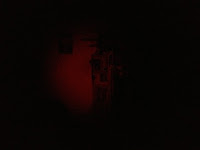I've had some fun recently finding and joining up with some new organisations, for fun and education, licensing and commeradery.
I've been a member of the Victorian Kendo Renmei since 1998, and by association the Australian Kendo Renmei This has provided coverage under the Weapons Control Acts in Victoria for a number of items in my collection, as well as my practice of kendo and its associated arts.
To supplement that, and on top of my exemption by the Governor in Council as a bona fide collector, I also joined the Victorian Historical Edged Weapons Collectors Guild . I also signed up for my Paintball Marker License, after my run in with customs whilst trying to get parts to build a super cool looking lazer-tagger for the Stargate LARP I am involved in.

Then there are the more fun and exciting memberships. I've been a member of Immanent Threat Solutions Tactical for a couple of years now. They specialise in information, training and equipment to deal with, as the name suggests, Immanent Threats. From knot-work, to lock picking, survival navigation to urban threat assessment, as well as working with several groups of makers to produce some cool kit and reviews. I'm very pleased to be a part of their community, in my small way.
Zombease is a lot like my own writing, but specialising in Zombie Apocalypse scenarios. I really enjoy reading their content, Jake Sepulveda is a great guy, and I have enjoyed getting behind his line, and backing his projects.Try out the "Choose your own adventure" section and see how you go. Read all the guides first, and mentally equip yourself.
 Zombie Squad is a philanthropic organisation dedicated to first response and support for ALL disasters, zombie or otherwise. They pride themselves on their mission to "educate the public about the importance of personal preparedness and community service, to increase its readiness to respond to disasters such as earthquakes, floods or zombie outbreaks."
Zombie Squad is a philanthropic organisation dedicated to first response and support for ALL disasters, zombie or otherwise. They pride themselves on their mission to "educate the public about the importance of personal preparedness and community service, to increase its readiness to respond to disasters such as earthquakes, floods or zombie outbreaks."I have been proud to help in their efforts to support the Hurricane Sandy relief drive (2012) and the Oklahoma Tornado relief drive (2013). Like Zombease, they also offer "zombie apocalypse" training and guides, but also apply these lessons to more mundane situations, for the benefit of their communities.
Lastly, and most recently added to my list of "professional associations" in the field of Apocalypse Survival, is the Zombie Eradication Response Team. Who also offer real-world training for disaster preparedness, from a more martial perspective, that is an "organization that uses the Zombie as a metaphor for any one of numerous natural or man made disasters that have and will occur in our lives." I signed up and got some cool patches from them as well. I look forwards to connecting with other folks from "Squadron Q" (Australia) and maybe see you at an event.
I suppose my Health Informatics Association of Australia and Australian Society for Microbiology could also count ... I certainly keep an eye on the bulletins ...

















































